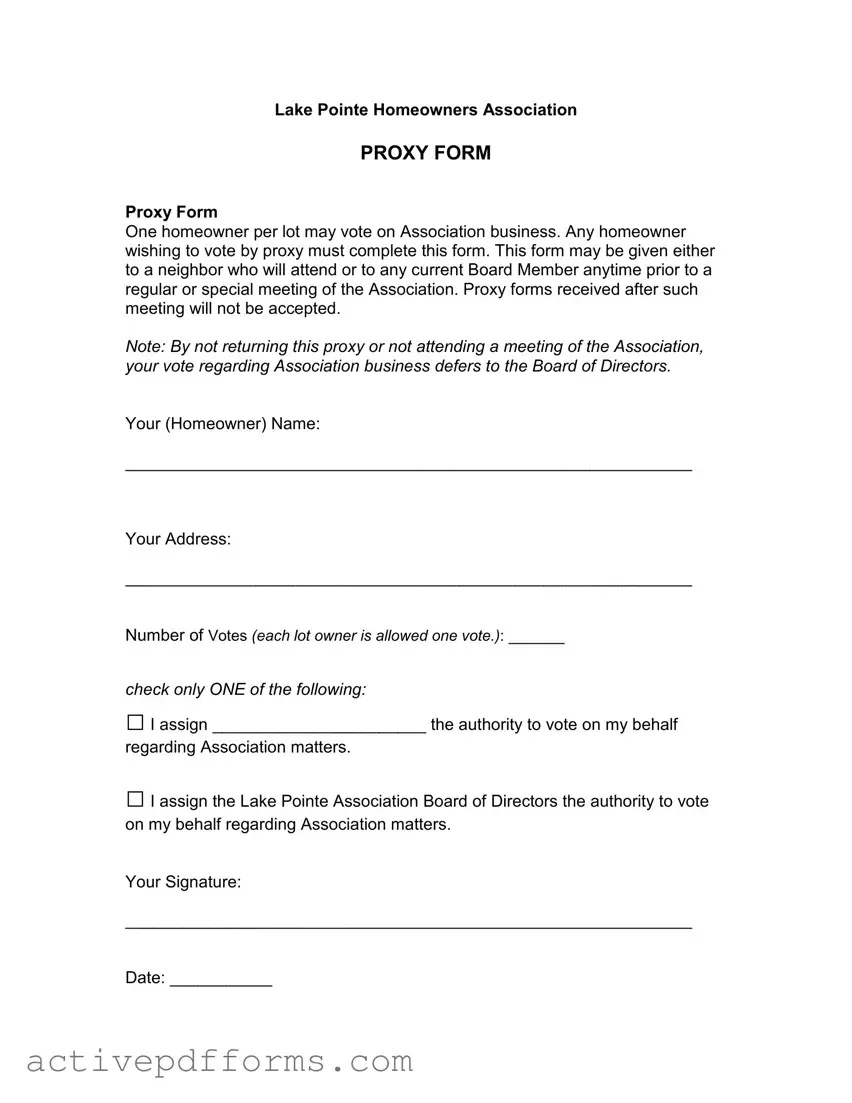Free Homeowners Association Proxy PDF Template
A Homeowners Association Proxy form allows a homeowner to delegate their voting rights on association business to another party. This form is crucial for those unable to attend meetings in person, ensuring they can still participate in key decisions. By completing this form, a homeowner may choose to entrust their vote to a neighbor attending the meeting or to any current Board Member before the scheduled association gathering.
Edit Homeowners Association Proxy Now
